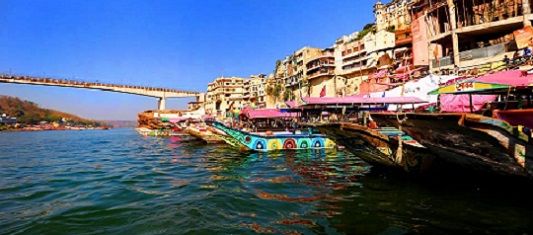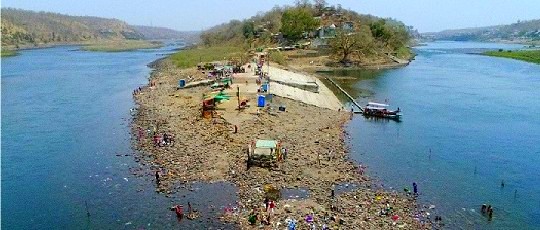The River

The Narmada, also known as Rewa or Mekal Kanya, is the largest river in Central India and the fifth largest in the Indian subcontinent. It flows entirely within India and is the third-largest river in the country after the Ganga and Godavari. The river flows for 1,312 kilometers in the west direction, from its origin in Madhya Pradesh's Satpura hills to its confluence with the Arabian Sea at the Gulf of Khambhat in Gujarat, passing through Madhya Pradesh, Maharashtra, and Gujarat.
Religious significance
Along with the Ganga, Yamuna, Godavari, and Kaveri, the Narmada is considered one of the five holiest rivers in India. Bathing in its waters is believed to cleanse all sins. According to the Puranas, at one point the Ganga became polluted due to the millions of people bathing in it. To purify herself, Ganga took the form of a black cow and bathed in the Narmada River. The Narmada is also considered more ancient than the Ganga. It is the only river in India that is circumambulated by devotees. The Narmada Parikrama is considered the most difficult and sacred pilgrimage, where ascetics and pilgrims travel from Bharuch to the river’s source in Amarkantak, covering a total distance of 2,600 kilometers. The only Jyotirlinga along the way is in Omkareshwar.
Narmada in Omkareshwar
At Omkareshwar, priests and devotees perform regular aartis and release lamps (known as Deepdaan) in the river in the evenings, especially during Narmada Jayanti and other festivals. The Narmada here divides into two streams forming an island known as Vaidurya Mani Parvat, where the Omkareshwar Jyotirlinga is situated. The northern part of the island is considered to be the Kaveri River, which is wide and shallow, while the Narmada to the south is narrow and deep
Sangam

At Omkareshwar, priests and devotees perform regular aartis and release lamps (known as Deepdaan) in the river in the evenings, especially during Narmada Jayanti and other festivals. The Narmada here divides into two streams forming an island known as Vaidurya Mani Parvat, where the Omkareshwar Jyotirlinga is situated. The northern part of the island is considered to be the Kaveri River, which is wide and shallow, while the Narmada to the south is narrow and deep